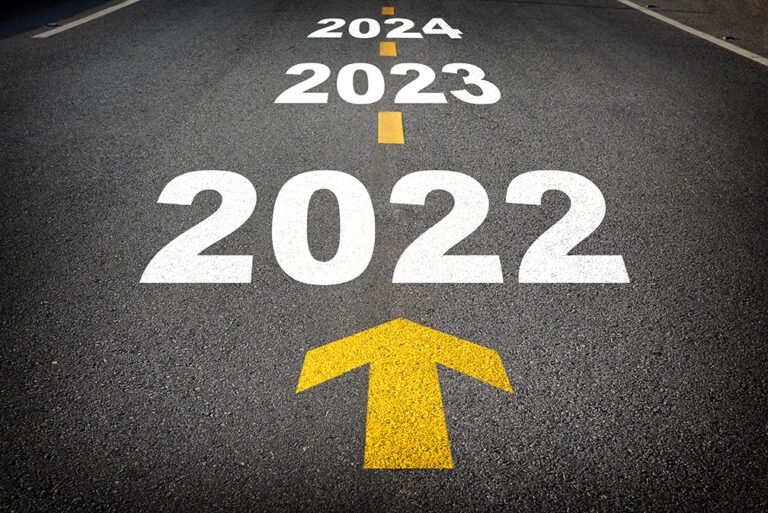According to some experts, not only will a worldwide economic recession occur in the first half of 2023, but a new name has also been invented to describe it. Get ready for the “pasta bowl” recession. The moniker applies to the expected shape of a graph of economic data and indicates a “low, wide and shallow” recession with rather gradual decline and recovery periods.
Other experts disagree.
One issue is that the definition of the term “recession” isn’t universal. A common definition is two consecutive quarters of negative U.S. Gross Domestic Product. By that description, a recession occurred during the first and second quarters of 2022, with a recovery in the third quarter when the GDP returned to positive territory.
Some economic groups, like the National Bureau of Economic Research (NBER) include more factors in their determination, such as employment, personal consumption, and industrial production. Unemployment numbers in particular have stubbornly remained low — a key indicator that a recession isn’t occurring at all.
More importantly to motor carrier executives — how will all these factors impact the business of trucking?
Available information points to a picture that is as murky as the predictions of the “maybe” recession.
On the one hand, freight rates have been a cause for concern for most of 2022. Spot rates began falling early in the year, while contract rates remained stagnant and then began contracting. To counter the expected declines in revenue, U.S. buyers took delivery of more than 70,000 new Class 8 trucks in the three months ending in October.
As order boards for 2023 were opened, record numbers of trucks were ordered in September, followed by strong months in October and November. As of this writing, the backlog of Class 8 truck orders exceeded 206,000, a figure that will take more than eight months to build.
“There was so much pent-up demand waiting for those 2023 order boards to open up, it’s reminiscent of people lined up outside an Apple Store (when a new model is introduced),” said Eric Crawford, vice president and senior analyst at ACT Research.
With freight rates falling and an economic recession on the horizon, how can buyers be so eager to invest in new equipment? Kenny Vieth, ACT president and senior analyst, explained in the Nov. 30, 2022, release of the firm’s Commercial Vehicle Dealer Digest
“As we have long argued, carrier profits are the critical element in vehicle demand. Profits in 2023 are anticipated to be lower, but even modeling a sharp downturn — the worst since 2007 — truckload (TL) net margins are projected to be the fourth best on record,” he noted.
In ACT’s November 2022 State of the Industry: Classes 5-8 Vehicles, Crawford stated, “We continue to expect a freight recession, and an eventual economic recession (mild to medium in magnitude), but OEMs at this point have clear visibility to a strong first half of 2023 (barring any unforeseen cataclysmic events).”
Carriers that use credit for equipment purchases and other expenditures will be paying more for the amounts they borrow. In an attempt to curb the highest rate of inflation in 40 years, the Federal Reserve has raised its benchmark interest rate six times in 2022 and was expected to do so again at its mid-December meeting. If the expected .5% increase was made, the target range for benchmark interest will be 4.25% to 4.5%.
In the meantime, the rate of inflation has continued to push consumer prices skyward and was expected to end 2022 at 7.68%, according to the International Monetary Fund as reported by Statista. The projected rate for 2023, according to the same source, is 2.86%, much closer to the 2% goal of the Fed.
The increases pushed the interest rate for home mortgages over 7% for the first time in four decades. For trucking, the resulting declines in home building will impact the number of available loads of building materials, appliances and other related products. Because interest rates will also increase for the purchase of automobiles and other durable goods, shipping in those industries is expected to decline as well.
Another impact to trucking comes from areas in which inflation is having the greatest impact.
According to the U.S. Bureau of Labor Statistics, the cost of food consumed at home was 10.9% more expensive in October 2022 than a year earlier, with categories such as cereals, bakery products and dairy products nearing 16% higher. Energy costs, including costs for electricity and home heating, were even higher. Families are spending more of their incomes for basic necessities, leaving fewer dollars to purchase products.
The question remains: How bad will it get?
According to Sean Snaith, national economist and director of the Institute for Economic Forecasting at the University of Central Florida, the recession is already here.
“The Pasta Bowl Recession began with a whimper (in 2022) and will end the same way in 2023,” he wrote in his latest U.S. Economic Forecast.
The report compares first-half 2022 employment gains of 4.3% in the U.S. nonfarm business sector to a decline in the annual GDP rate of 2.3%, pointing out the resulting 6% decline in labor productivity. That period represented the largest two-quarter decline in productivity since 1947, when data collection began.
The conclusion? Low unemployment numbers are not evidence that a recession is not occurring.
The Fourth Quarter 2022 Survey of Professional Forecasters, published by the Federal Reserve Bank of Philadelphia and based on input from 38 industry professionals, predicted fourth quarter GDP growth of 1% for the fourth quarter to result in growth of 0.7% for the full year. However, the prediction is an average of the forecasts received from industry professionals. More than a third of the forecasters in the survey (36.3%) predicted a GDP contraction in the fourth quarter.
For the following quarters, 47.2% of economic forecasters see GDP contraction in the first quarter of 2023 and 49.4% in the second quarter, followed by 46.1% in the third and 43.5% in the fourth.
It’s clear that even the forecasters don’t agree on whether there will be a recession, when it might arrive or how long it will last.
The answer to navigating the economic road ahead very much depends on which forecaster is asked.
Cliff Abbott is an experienced commercial vehicle driver and owner-operator who still holds a CDL in his home state of Alabama. In nearly 40 years in trucking, he’s been an instructor and trainer and has managed safety and recruiting operations for several carriers. Having never lost his love of the road, Cliff has written a book and hundreds of songs and has been writing for The Trucker for more than a decade.














